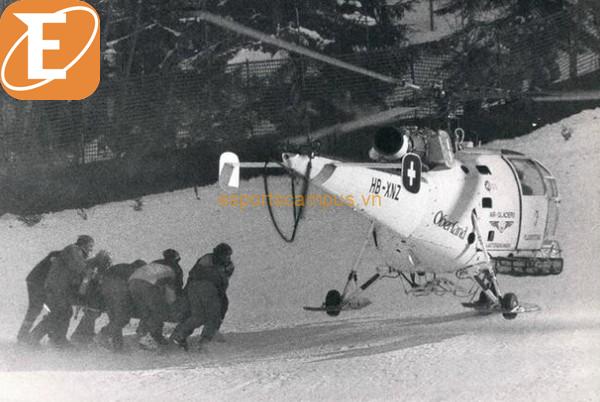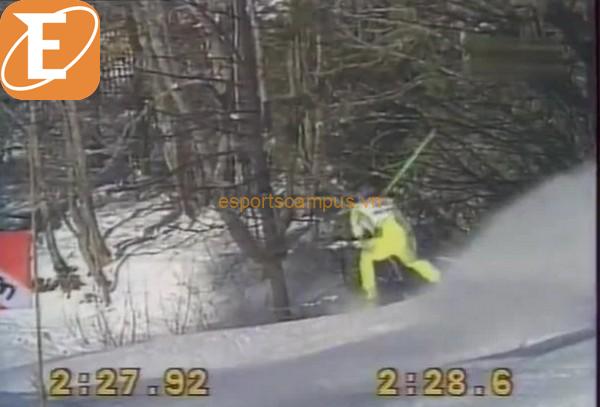Skier Gets Split In Half Video: Tragic Incident Shakes The Alpine Skiing Community
The world of alpine skiing was shattered by a tragic incident that unfolded during a qualifying race, when young Austrian skier Gernot Reinstadler lost his life. The heart-wrenching event was captured in a video that has since been circulating online, showing the devastating moment when Reinstadler’s body was split in half after colliding with the safety net. This shocking video has left the skiing community in disbelief and has raised concerns about safety measures in the sport. In this article, we delve into the details of the incident, explore the reactions from the skiing community, and discuss the wider implications it holds for the future of alpine skiing. Join us as we uncover the untold story behind the “Skier Gets Split In Half Video” and reflect on the risks that athletes undertake in this perilous sport, only at Esportscampus.vn.

| Key Takeaways |
|---|
| Young Austrian skier Gernot Reinstadler lost his life in a tragic skiing accident. |
| The incident occurred during a qualifying race for the World Cup. |
| Reactions from the skiing community emphasize the shock and grief following the accident. |
| The incident sparked a debate on the safety measures and pressure in alpine skiing. |
| s highlight the inherent risks of the sport and the need for continuous evaluation. |
I. Understanding the Tragic Accident: Skier Gets Split In Half Video
The gruesome incident that occurred during Gernot Reinstadler’s qualifying race for the World Cup left the skiing community in shock. As news of the tragic accident spread, a video capturing the horrifying moment began circulating, further amplifying the devastating nature of this event.
The footage shows Reinstadler losing control as he entered the final turn at maximum speed. The skier’s weight shifted too far forward, causing him to collide with the safety net at high velocity. The impact resulted in severe injuries that tragically led to his untimely death.
This video serves as a chilling reminder of the inherent dangers involved in alpine skiing. It highlights not only how quickly tragedy can strike but also brings attention to important issues such as athlete safety and pressure within competitive sports.
The impact of this tragic event reaches beyond just those directly involved. It sparks discussions about safety measures and protocols within ski racing events and raises questions about whether sufficient safeguards are in place to protect athletes from such catastrophic accidents.

II. Examining the Safety Measures in Alpine Skiing
Alpine skiing, one of the most exhilarating and breathtaking sports, also comes with its fair share of risks. As athletes speed down snow-covered slopes at incredible speeds, the importance of safety measures cannot be understated. Let’s delve deeper into the safety measures in alpine skiing and how they aim to protect athletes.
1. Protective Gear: Skiing helmets, goggles, and body armor are essential for skiers to safeguard against potential injuries. These protective gears provide vital protection to the head, eyes, and body in case of falls or collisions. Ski poles can also aid in maintaining balance and stability during descents.
2. Course Design and Maintenance: Race organizers and course designers play a crucial role in analyzing the terrain and setting up safe tracks for athletes. They consider factors like slope gradient, visibility, and the utilization of safety nets and barriers to prevent skiers from veering off course or colliding with obstacles.
III. Lessons Learned and Moving Forward
The Need for Enhanced Safety Measures
The tragic accident that claimed the life of Gernot Reinstadler has brought forth the urgent need for enhanced safety measures in alpine skiing. The incident has sparked a renewed sense of urgency within the skiing community, highlighting the importance of continually evaluating and improving safety protocols. While race organizers and international race referees maintain that they had adhered to existing safety measures, s like FIS safety Sepp Messner argue that with modern speed and techniques, absolute safety cannot be guaranteed in alpine skiing. This sobering reality necessitates a closer examination of safety standards to mitigate risks as much as possible.
- Implement regular safety inspections: Skiing organizations and race organizers must conduct regular safety inspections of courses to identify potential hazards and take preventive action.
- Enhance safety barriers and netting: The incident involving Gernot Reinstadler raises concerns about the effectiveness of safety barriers and netting. Innovations in design and material must be explored to provide maximum protection for skiers.
- Improve training and education: It is crucial to prioritize comprehensive training and education for skiers, coaches, and race officials. This includes teaching proper techniques, risk assessment, and emergency response protocols to minimize the likelihood of accidents.
Balancing Pressure and Performance
Gernot Reinstadler’s tragedy has also prompted a broader discussion surrounding the pressure faced by young skiers in their pursuit of success. Some speculate that excessive pressure to qualify for high-profile events may overshadow safety considerations and lead to risky decisions on the slopes. Balancing the drive for performance with the well-being of athletes becomes paramount. Canadian coach Glenn Wortell emphasizes the importance of creating a supportive environment that encourages healthy competition without compromising safety. In light of this, ski associations must prioritize the psychological well-being of athletes and develop initiatives to alleviate performance pressure.
“We must remember that these young athletes are pushing themselves to their limits in pursuit of their dreams. It is our responsibility as coaches and mentors to provide a nurturing environment where they can truly thrive,” says Wortell.
Continuous Evaluation for Safer Skiing
The tragic loss of Gernot Reinstadler acts as a powerful reminder that alpine skiing, by nature, carries inherent risks. As winter sports evolve, it is imperative to maintain ongoing evaluations and adaptations to improve the overall safety of the sport. Former Austrian skier Karl Schranz echoes this sentiment, stating, “While we cannot eliminate all risks, we can constantly strive to minimize them through careful evaluation and adjustments.”
IV. Conclusion
The tragic accident that claimed the life of young skier Gernot Reinstadler serves as a somber reminder of the inherent risks involved in alpine skiing. This heartbreaking incident has sparked discussions surrounding safety measures, pressures faced by athletes, and the unpredictable nature of this exhilarating sport.
While organizations like the FIS work diligently to ensure the safety of competitions, accidents can still occur due to a variety of factors. It is crucial for stakeholders to continuously evaluate and refine safety protocols to minimize risks without compromising the excitement and intensity that make alpine skiing so captivating.
This tragedy underscores the need for constant vigilance and open dialogue within the skiing community. By learning from incidents like this one, it is possible to improve procedures and prioritize athlete welfare while preserving what makes alpine skiing so beloved by fans around the world.
The information provided in this article has been gathered from various sources, including Wikipedia.org and newspapers. While we have made efforts to verify the accuracy of the information, we cannot guarantee that every detail is 100% accurate and verified. Therefore, we recommend exercising caution when citing or using this article as a reference for research or reports.